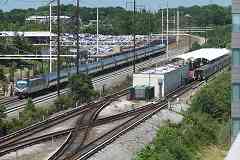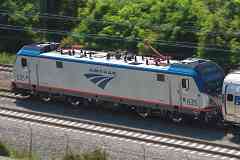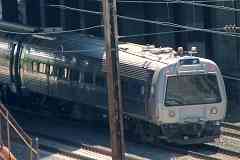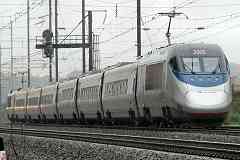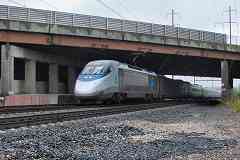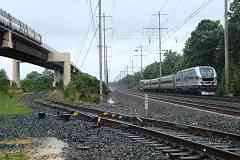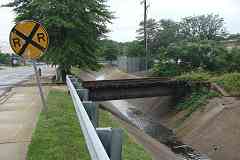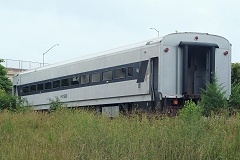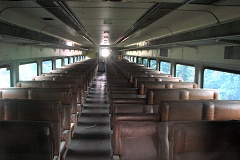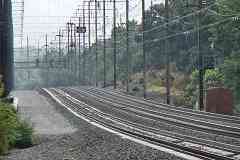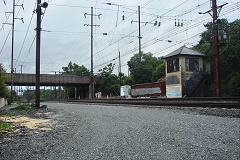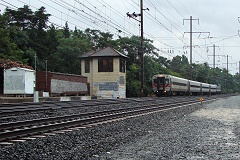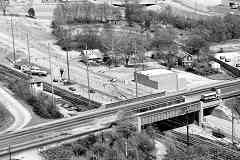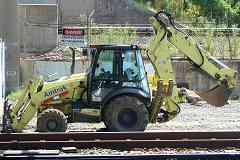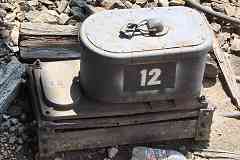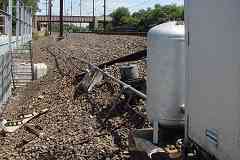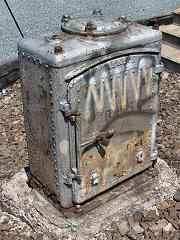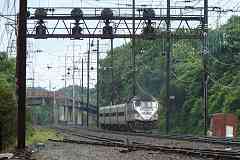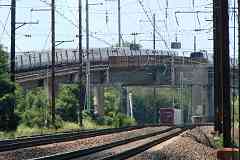|
This MARC train bound for Washington is following the Magruder Branch.
The tracks on the left are the ex-B&P mainline to Washington, now
used by CSX.
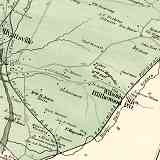 This area had been known as Magruder. A Hopkins 1878 map shows Lewis
Magruder, and F. Magruder, likely relatives of the family associated
with the Magruder grocery chain in Washington. Before Landover this
area was known as Wilson's Station, and Blithewood Post Office.
This area had been known as Magruder. A Hopkins 1878 map shows Lewis
Magruder, and F. Magruder, likely relatives of the family associated
with the Magruder grocery chain in Washington. Before Landover this
area was known as Wilson's Station, and Blithewood Post Office.
The map's rail line marked "Wash. & Pt. Lookout Bra. B&O" began in 1872
as an independent rail company, but was quickly acquired by the B&O to do
an end run around the Pennsy's B&P end run into Washington that gave the
PRR control of Long Bridge to Virginia. For awhile the line was known
as the B&O's Baltimore, Washington and Alexandria Branch of the
Washington City and Point Lookout Railroad. Fortunately, that was later
shortened to Alexandria Branch.
| 